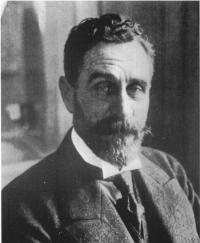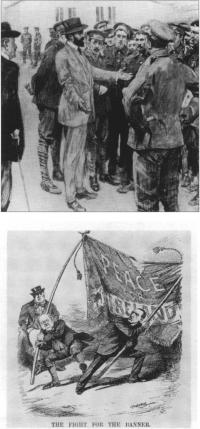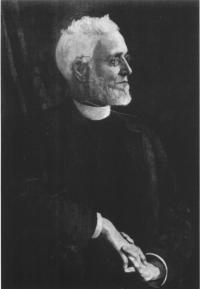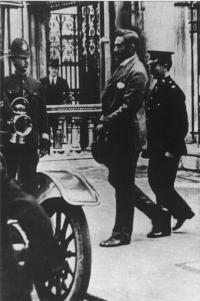The real importance of Sir Roger Casement by Paul Bew
Published in
20th-century / Contemporary History,
Features,
Issue 2 (Summer 1994),
Volume 2

Roger Casement, 1976. (MANSELL COLLECTION)
Sir Roger Casement deserves better. The former senior British Consular official 1895-1913 had, as his friend, the highly respectable Presbyterian minister /.B. Armour of Ballymoney put it, ‘an inborn hatred of tyranny and cruelty’ which led him to expose cruelties in the Congo and in the rubber plantations of Brazil.
But his three professionally authenticated cloth-bound diaries for 1903, 1910 and 1911 which have recently been put on general access by the Public Record Office in Kew have diverted public attention yet again to his undeniable promiscuous homosexuality. Casement seems set to be remembered as a noted diarist rather than anything else. Worse still these diaries – which register confusion as well as excitement – are not like Alan Clarke’s recent classic, a largely political narrative with a sexual. undertone. In the main, the diaries are a terse and, at times explicit, record of encounters with rent boys. They throw virtually no light on the fascinating question of the political development of Casement, a Dublin Protestant, towards the embrace of two causes – radical Irish nationalism and Germany – both of which were then rather unfashionable in the British Foreign Office. We cannot even posit a link, common enough in this period, between certain types of sexual hedonism and unconventional politics; there is too much evidence of uncertainty and even guilt here for that though there is just perhaps a slight hint to this effect in his defence counsel, Sergeant A.M. Sullivan’s claim that Casement wanted to make a ‘rhapsodial justification’ of his homosexual practices as ‘inseparable from true genius’. The nearest we get to a political reference is a rather bizarre entry on 21 May 1910: ‘In Dublin. In Phoenix Park and lovely, a X [his code word for a sexual encounter] where F. Cavendish killed’. This is a reference to the brutal assassination by the Invincibles, a Fenian splinter group, of Lord Frederick Cavendish, newly appointed as a reforming Chief Secretary for Ireland by Gladstone. The event greatly embarrassed Casement’s fellow Protestant nationalist, C.S. Parnell, who, as a recently discovered document reveals, may have allowed himself to be sworn into the Irish Republican Brotherhood on the eve of the Phoenix Park murder.

Roger Casement talking to Irish prisoners
in a German prison camp by W.
Hatherell. (MANSELL COLLECTION)
Cartoon in Punch (15 April 1914) showing
Redmond (left) and Carson (right).
John Bull: ‘This tires me. Why can’t you
carry it between you? Neither of you can
carry it alone.’
Ballymoney meeting
Tragically, the effect of recent media coverage of the Black Diaries has obscured the nature of Casement’s very significant impact on Irish political life. Casement weakened the liberal, pro-home rule tradition in Ireland and especially that of a minority of prominent Presbyterians in Ulster. In September 1913, Casement, Captain George White – son of Sir George White, ‘the hero of Ladysmith’ – and Revd. J.B. Armour organised a meeting in Ballymoney, one of the traditional centres of Ulster Liberalism, to protest against the ‘lawlessness’ of Sir Edward Carson’s movement against home rule for Ireland which was then convulsing the province. In the light of future events, it is perhaps just as well that Captain White’s proposal that the meeting be directed against the ‘lovelessness’ of Carsonism was dropped. The meeting was a brave attempt to insist that not all Protestants were Unionists: the reality however was that the strong Antrim liberal tradition – which Casement experienced as a boy during his education at Ballymena Academy – had largely evaporated following Gladstone’s conversion to home rule in 1886.
Intrigue with Germany
Casement considered the meeting to be a success but it did not stop him striking out on a path which was to embarrass hugely the remnants of the residual Ulster Gladstonian tradition embodied by Armour. Casement, like the socialist James Connolly, took a firmly pro-German line on the first world war. This went far beyond the commonplace assum-ption of radical nationalists that ‘England’s difficulty was Ireland’s opportunity’. As early as 1911, while still a serving British diplomat, Casement wrote: The English mind, the English consciousness are such that to oppose German influence i~ the world is to this people a necessity. They oppose by instinct, against argument, in the face of reason’. As soon as the war started Casement devoted his efforts to the support of the wronged party, Germany. His gunrunning efforts in Ireland and his abortive attempt to persuade Irish prisoners-of-war to form a proGerman brigade have to be seen in this light. This dismayed his old Liberal friends in Ireland and elsewhere; they shared with home rule leader John Redmond a fundamental British imperial loyalty. Much of their argument against ‘Carsonism’ was that it weakened the United Kingdom in the face of the German threat. When the full extent of Casement’s intrigue with Germany became clear, Armour was shattered; especially as Unionists rubbed his nose in his past association. He took refuge in the view of the inventor of Sherlock Holmes, Arthur Conan Doyle, another respectable pro-home rule friend of Casement, who declared as early as 1914 that Casement had lost his mental balance. Armour wrote sadly on 1 July 1916: ‘It is tragedy. His actions for the last two years can only be explained on the ground of insanity. It is an illustration of a man of mature life yielding to temptation to a cause which could only end in failure even if for a moment it was partially successful. Young hearts are apt to be carried away by will-o-the-wisps but how a man of his experience of life could have been so demented is a mystery.’

Portrait of J.B. Armour by William Conor. (COURTESY OF TRINITY PRESBYTERIAN
CHURCH, BALL YMONEY)
Easter Rising
Armour, in a sense, had to go for the insanity defence. He was under enormous pressure arising out of his connection with Casement. When the Easter Rising took place, many Liberals argued that the real blame lay with Sir Edward Carson and the ‘unconstitutional’ nature of Ulster Unionist resistance to home rule: in reply Unionists argued that those like Armour who had encouraged Casement were to blame. Carson himself was anxious not to get embroiled in these controversies. His relations with Redmond – with whom he shared so many common experiences, Trinity College, the Munster circuit, the House of Commons – improved substantially in the 1914 to 1916 period. Carson told Sir James Comyn in later life: ‘I was born and bred an Irishman and I’ll always be one. The happiest days of my life were in Trinity College, Dublin and at the Irish Bar’. As Stephen Gwynn records in John Redmond’s Last Years of this period: ‘Nothing could be more cordial, Redmond said, than Sir Edward Carson’s manner to him. They met as old friends and, I believe that when they parted, one asked the other that they should have a “good shake-hands for the sake of old times on the Munster circuit”‘. Carson knew full well that Redmond was appalled by Casement’s actions: as Gwynn says: ‘Redmond had neither tolerance or pity for Roger Casement, who was in his eyes simply one who tried to seduce Irish troops by threats and bribes into treason to their salt, one who made himself among the worst instruments of Germany’. Carson contented himself with a brief defensive comment: ‘there have always been certain anti-English elements which have been accountable at one time for Fenian outbreaks, and at another time for the horrible outrages of the Phoenix Park … the leaders of the Nationalist party have been doing their best to help us in the present rising and I am sure they would agree with me that no useful purpose can be served by reviving these controversies’. Despite Carson’s advice, one Antrim Unionist R.D.S. Megaw, who still retained the dumdum bullet fired at his house in Dublin during the Rising, was moved to protest. He recalled the celebrated Ulster Liberal meeting at Ballymoney addressed by Sir Roger Casement on 24 October 1913: ‘It is unseemly to say the least of it, that the dupes and tools of Sir Roger Casement, who gave him such an effusive welcome on his first appearance in Irish politics, should for their wretched political ends attempt to drag the name of Sir Edward Carson to any association with the later rebellion’. Poor Armour could only fume: ‘If Sir Roger has gone wrong in his mind, we cannot help that any more than we can help ROM’s stupidities’.

Casement leaving the Law Courts after his appeal had been dismissed. (DAILY MIRROR PICTURE LIBRARY)
Execution
The politically disastrous decision to execute Casement and the other leaders of the Rising – after all, Casement, aware that German aid was insufficient, was trying to call it off – was by British standards especially in Ireland, abnormally severe. It was an aberration generated by the pressure of total war. Sergeant Sullivan, Casement’s defence counsel, agonisIngly makes it clear in his magnificent autobiography Old Ireland that he regarded his defence of Casement as a professional failure. Yet there was never any real need for the British authorities to fabricate the Black Diaries; the mystery remains as to why so many Irish nationalists have been so long ‘in denial’ about this. It remains the case that if Casement was insane at the end – as his friends Conan Doyle and Armour believed – he ought not to have been executed. But insane at the end or not, Casement was one of the two men – the other was James Connolly – who did most to destroy the vision of a previously dominant moderate nationalism. The guiding concept here was a home rule parliament – a debt owed to history which once paid, paved the way for full Irish participation in United Kingdom concerns, Irish membership of the London cabinet for example. Oddly, but no doubt significantly, the strong pro-German element of Connolly and Casement’s thought has been largely forgotten in modern Ireland. It has been a veritable ‘will-o-the wisp’, in Armour’s phrase, but deprived of much of its subjective rationale for the two men, the effects of the Connolly-Casement negative achievement continue to haunt Anglo-Irish relations.
Legacy
In other respects too, the ambiguity of Casement’s career continues to haunt us. Symbolically, when Harold Wilson decided on his grand gesture of returning Casement’s remains to Ireland, the precise corpse could not be located and the Irish government agreed to accept instead an offering of rather uncertain content. Then there is the paradox of the Protestant who goes over to ‘the other side’ retaining a sporadic admiration for Carson. It is perhaps amusing to see Casement tell the stuffy headmaster at Ballymena Academy that the only school in Ireland he would be prepared to support financially was St Endas; less amusing to see his close association with Professor Agnes O’Farrelly, who espoused a policy of compulsory Irish in schools which could never have won Irish Protestant consent. After his execution the North Antrim Standard recorded that Casement often visited Ballymena district when on holiday but did not make himself publicly known on these occasions. He regularly walked from Ballycastle to Ballymena and even to Belfast, his diet on these jouney’s being nothing more elaborate than bread, butter and sweet milk. Perhaps he ought to have stopped to chat to the inhabitants.
Paul Bew is Professor of Irish Politics at Queen’s University, Belfast.
Further reading:
R. Sawyer, Casement: the flawed hero
(London 1984).
C.J. O’Donnell & B. Clifford, Ireland in the
Great War (Belfast 1992).
J.R.B: McMinn (ed.), Against the tide: a calendar
of the papers of Rev. J.B. Armour,
Irish Presbyterian and Home Ruler 1869-
1914 (Belfast 1985).
P. Bew, Ideology and the Irish Question
1912-16 (Oxford 1994).




















